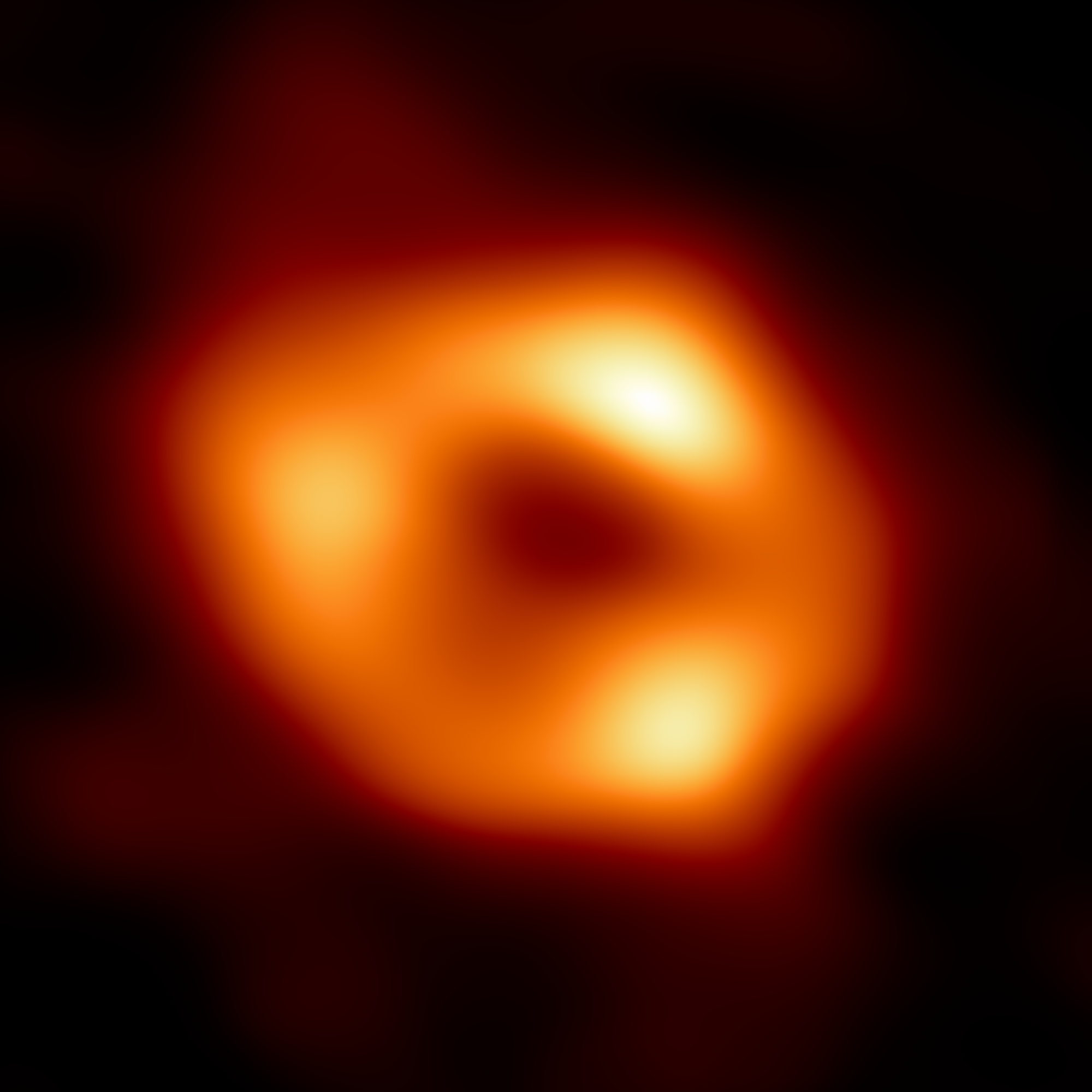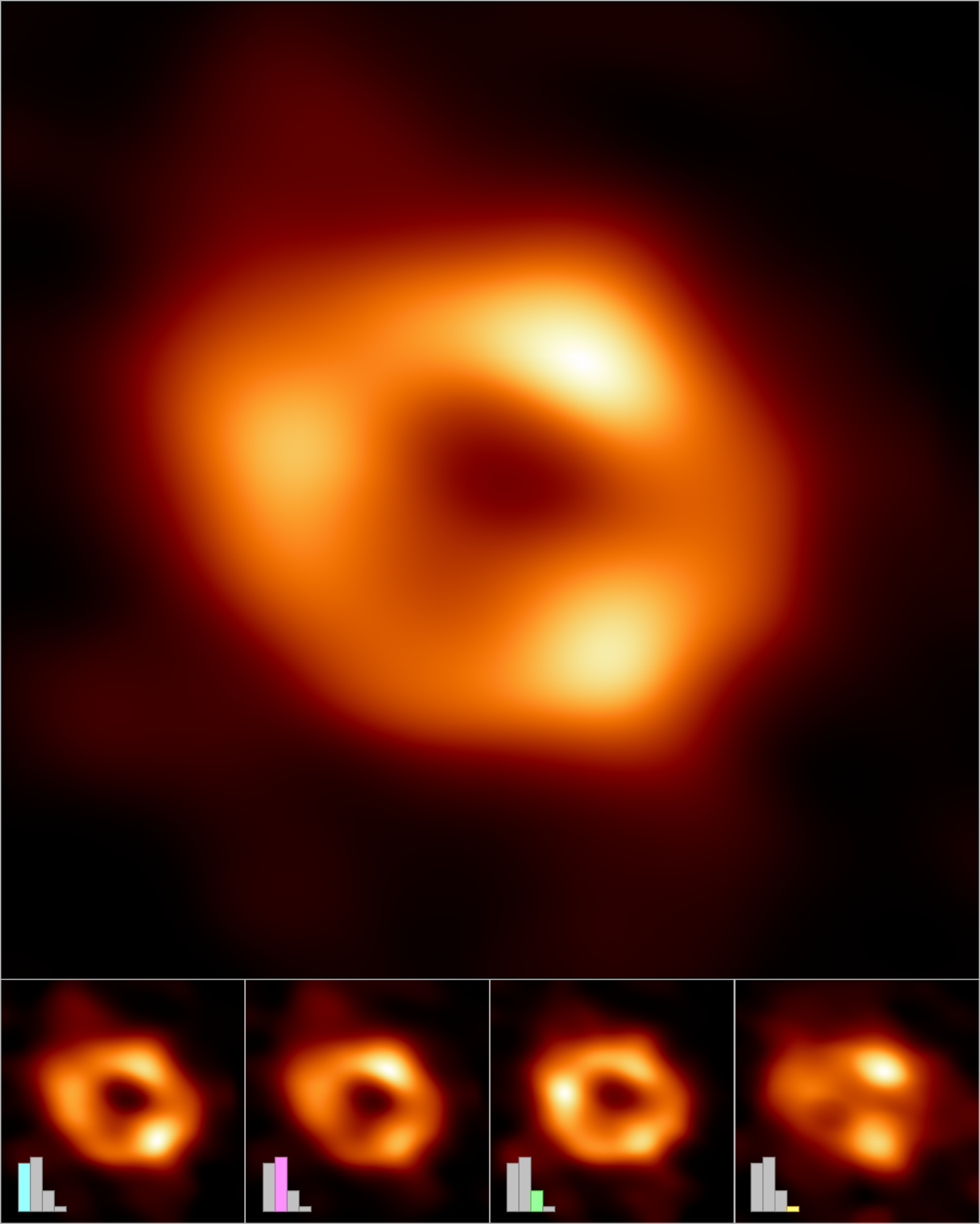Supermassive black hole at center of Milky Way photographed for the first time
Astronomers have just released the first picture of a supermassive black hole found at the center of our galaxy

A photo of a black hole at the center of the Milky Way has been unveiled by astronomers working on the Event Horizon Telescope collaboration. Although this isn’t the first time astronomers have photographed a black hole, it is the first time they’ve managed to capture one in our own galaxy.
Black holes are a region of spacetime where gravity is so strong that no particles or light can escape them. They are thought to be found at the center of most galaxies and are created when massive stars explode in an astronomical event known as a supernova. The first black hole was photographed in 2019 and is known as M87* in a galaxy that's 53.49 million light years from earth.
• These are the best cameras for astrophotography
These photos of the black hole known as Sagittarius A* (SgrA*, pronounced sadge-ay-star) confirm scientists' theories based on observations of stars orbiting something invisible and massive. Since black holes absorb all light, we cannot observe the black hole itself but we can see the glowing gas that surrounds a dark central region in a ring-like structure.
Even though this black hole is much closer to Earth than the black hole known as M87* found in the distant Messier 87 galaxy, photographing it proved to be a much bigger challenge. The reason for this is because SgrA* is smaller than M87* so the gas that orbits it takes just a couple of minutes to complete an orbit rather than a matter of weeks so the image is constantly changing.

SgrA* is about 27,000 light-years away from Earth and in order to photograph it astronomers created the Event Horizon Telescope which linked together eight existing radio observatories across the planet to form a single ‘Earth-sized” telescope. Over a series of nights, the EHT observed SgrA*, compiling hours' worth of data just like you would if you were photographing a night sky using bulb mode.
One of the scientists working on the EHT collaboration is Geoffrey Bower from the Institute of Astronomy and Astrophysics, Academia Sinica in Taipei. "We were stunned by how well the size of the ring agreed with the predictions from Einstein's Theory of General Relativity," he said of the observations made by SgrA*.
Get the Digital Camera World Newsletter
The best camera deals, reviews, product advice, and unmissable photography news, direct to your inbox!
"These unprecedented observations have greatly improved our understanding of what happens at the very center of our galaxy and offer new insights on how these giant black holes interact with their surroundings."
The results from the EHT findings will be published in a special edition of The Astrophysical Journal Letters and the EHT will continue to expand its network of telescopes. Scientists hope that the ongoing expansion and technological advances will one day enable them tp capture even better photos of black holes and possibly even videos.
Read more:
Best lenses for astrophotography
Best star tracker camera mounts for astrophotography
Best telescopes for astrophotography

Having studied Journalism and Public Relations at the University of the West of England Hannah developed a love for photography through a module on photojournalism. She specializes in Portrait, Fashion and lifestyle photography but has more recently branched out in the world of stylized product photography. Hannah spent three years working at Wex Photo Video as a Senior Sales Assistant, using her experience and knowledge of cameras to help people buy the equipment that is right for them. With eight years experience working with studio lighting, Hannah has run many successful workshops teaching people how to use different lighting setups.
